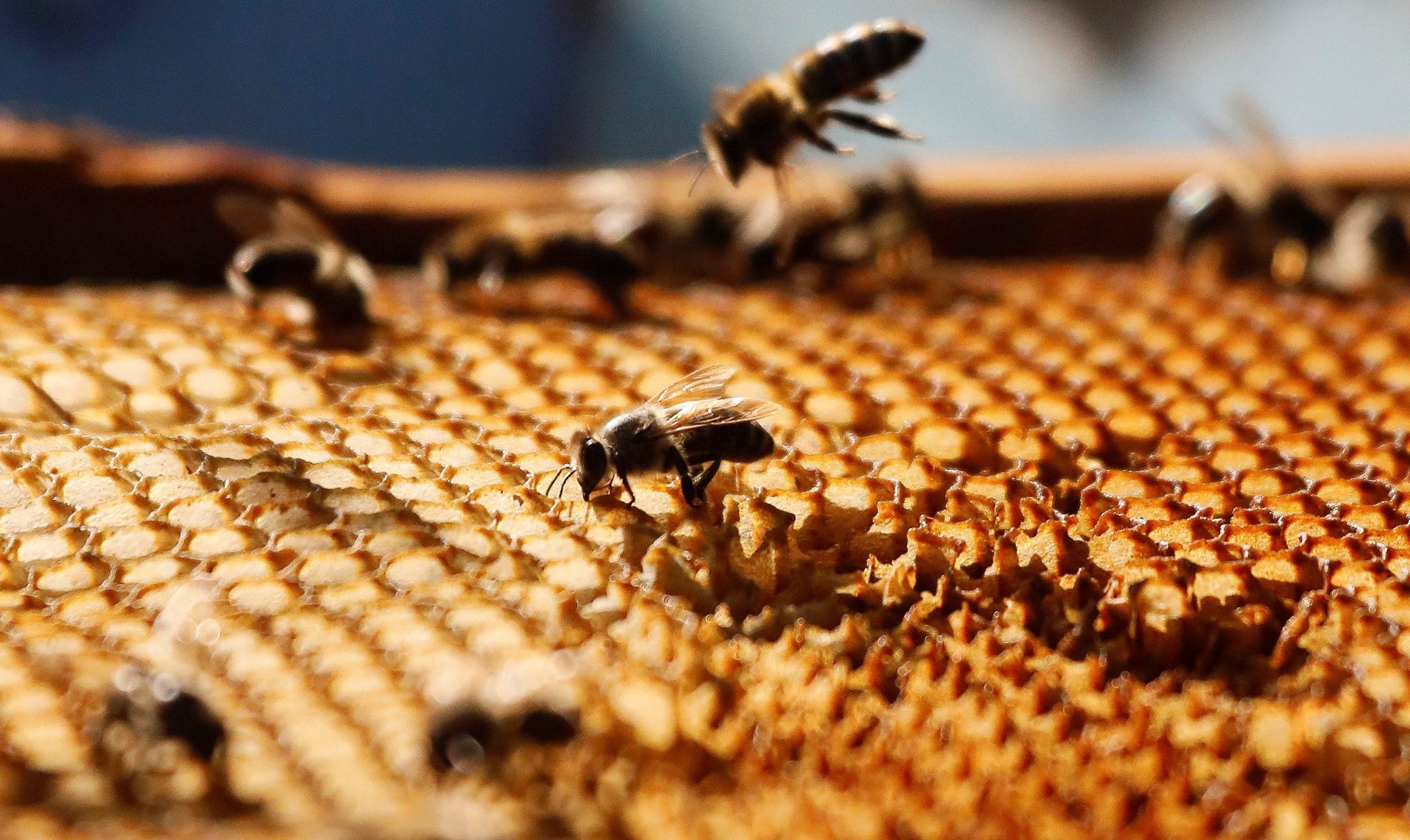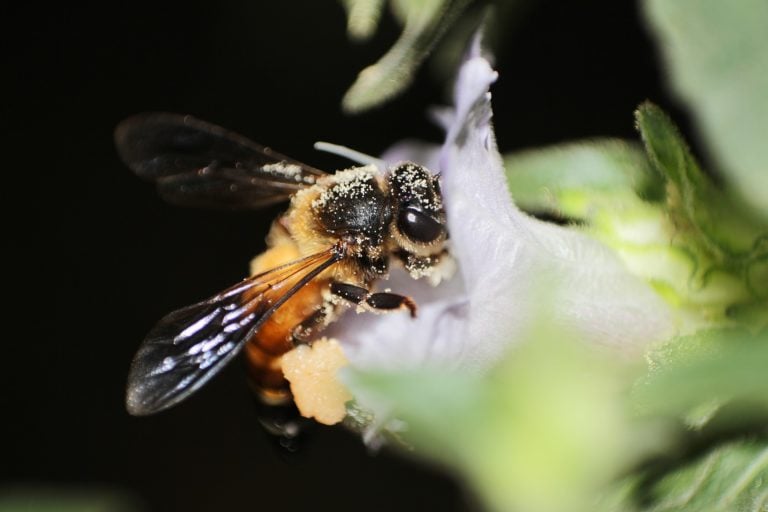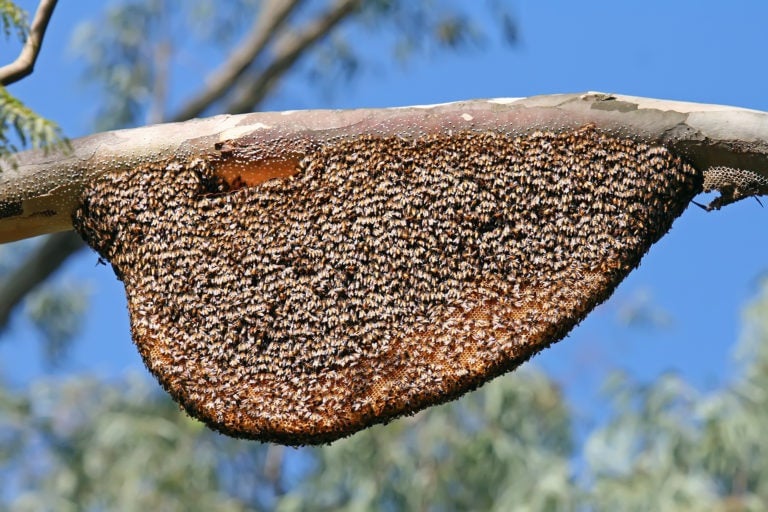As bees feel the sting of climate change, here’s a way to let them keep buzzing
“Everyone wants honey. But no one wants the bees near them,” says 34-year-old Pune city resident Amit Godse of Bee Basket, who runs a business extricating beehives from neighbourhoods that don’t like them. Godse then relocates the beehives to wooded areas or farmlands bordering the city or sends them to beekeepers.


“Everyone wants honey. But no one wants the bees near them,” says 34-year-old Pune city resident Amit Godse of Bee Basket, who runs a business extricating beehives from neighbourhoods that don’t like them. Godse then relocates the beehives to wooded areas or farmlands bordering the city or sends them to beekeepers.
Bee Basket also sells sustainably harvested honey and other honey-based products, employing farmers and tribal communities and educating them on beekeeping.
“We produce honey from wild and domesticated bees. We harvest two-thirds of the honey and leave the rest for the bees. Some wild honey collectors drain the entire hive and even destroy it in the process,” explains Godse.
Honey bees collect the nectar of flowers and store it in wax combs as a food source to feed immature larvae and adults during winter.
Apis cerana indica (Indian hive bee), Apis mellifera (European bee), and Melipona irridipennis (stingless bee) are honey bees found in India that can be domesticated in bee boxes. Apis dorsata (rock bee) and Apis florea (little bee) are wild honey bees. Bumblebees and carpenter bees are bee species that can also be found in India.
Globally, 75% of food crops depend to some extent on animal pollinators, primarily insects, especially bees. Beekeeping facilitates pollination and increases crop yield but wild pollinators also play a significant role in pollination.
In addition, bees help propagate biodiversity in cities and forests. Nearly 90% of wild flowering plants depend on animal pollinators for seed production. For instance, Cassia fistula or the Indian laburnum, a native tree that paints many cities yellow at the onset of summer, is pollinated by several species of carpenter bees.

But the abundance and diversity of wild pollinators across the world are falling due to human activities such as intensive agriculture, pesticide use, and climate change.
Bees are facing the consequences of urbanisation too.
“Habitat loss and the lack of flowering trees in cities are huge issues. Sound, air, and light pollution also stress the bees,” said K Lakshmi Rao, assistant director, Central Bee Research and Training Institute, Pune.
Rock bees, the most commonly found species in Indian cities, nest in buildings and arches instead of tall trees. And that brings the possibility of conflict with humans.
Godse believes that bees don’t bother humans unless provoked. He says that fear of bees due to lack of knowledge about them is the biggest threat to the species. “People spray pesticides on hives or burn them. They think destroying it is the end of the issue. But losing bees is actually the beginning of it.”
S Basavarajappa, associate professor and part of the apidologie lab that studies honey bees, their behavior, and ecology at the University of Mysore in Karnataka, India says, “Glass buildings and packed concrete roads in cities trap the heat and increase the temperature, altering its local climate. Bees can’t handle the heat beyond a point.” He has been studying the rock bee colonies in Mysore, a city in south India, for many years and observed a 2% decline in colonies every year though reasons are yet to be identified.
Globally, various studies have linked climate change to potential population decline in bees. Another study describes how a mismatch between flowering time due to global warming and bees’ activity led to fitness losses in the insect.
“Bees cannot cope if it is too hot. If it is too cold, they will be strained to produce more honey. Untimely rains affect the flowering and nectar availability,” said Rao.
But urban centres can do their bit to keep the buzz alive. A 2019 study across four British cities found that urban centres are a haven for pollinators as compared to neighbouring farmlands, and a study in Bengaluru suggests that neighbourhood parks in cities support biodiversity, including insects.
“People can plant native trees in their localities, and keep plants of local fruits and vegetables and in their windows and balconies,” suggests Rao. She advises people to get trained in beekeeping from the state-run institutes or other groups to learn more about them.
Godse promotes the idea of urban beekeeping and to see native bees as pets. He believes that even in dense cities, houses with a balcony can keep bee boxes with stingless bees after they get trained. “The bees will collect nectar from trees within a two-three kilometres radius and return to your house. You’ll have a hobby, and they’ll help in pollination.” Bee Basket has helped 35 houses in Pune to start beekeeping.
Basavarajappa says existing green spaces and trees need to be preserved, and emphasises that awareness programs amongst the local youth and in residential areas are critical to sensitise them towards bees and adjust their common perception from stinging pests to helpful allies.
At a time when bees are struggling to cope with challenges in urban areas, Godse says, “the best way to handle them is not to handle them at all.”

This post first appeared on Mongabay-India. We welcome your comments at [email protected].